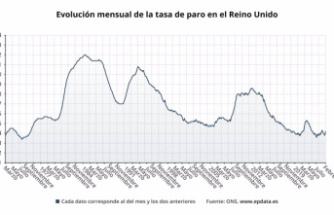While massive, damaged Oroville Dam threatens to disgorge floodwaters, you’ve got to ask yourself: Do Southern California dams pose a significant threat to people living below them?
You can exhale now, the region’s water operators said Monday. Officials said most local dams holding back big reservoirs — such as Diamond Valley Lake near Hemet — are newer than Oroville and not vulnerable to collapse. And most older dams in the region have been forified in recent years, they say, or are puposely holding lower levels of water for safety’s sake.
It helps, too, said Jay Field, spokesman for the U.S. Army Corps of Engineers in Los Angeles, that many area dams were built for the purpose of temporarily holding back flood waters. Those dams gradually release water as storms depart and, unlike Oroville, walls of water don’t tend to push against them for long periods.
Asked if people living below flood-control dams operated by the Corps of Engineers should be concerned, Field said, “No. Not at all.”
That’s not to say there are not weak spots.
Several years ago, state officials determined that Lake Perris in Riverside County was too weak to withstand an earthquake. For some time now, the water level has been kept lower than usual to ease that threat, while repairs proceed. As of Monday, Lake Perris sat at 39 percent of capacity, a state website showed.
In 2005, more than 2,000 people living below Prado Dam near Corona were evacuated when it was discovered water was seeping through the structure. Field said several projects undertaken since have bolstered the dam, and made it strong enough to store significant amounts of runoff that can be turned into drinking water.
Downstream of Prado lies a massive underground reservoir along the Santa Ana River that supplies much of Orange County. And the Orange County Water District said it has been drawn down by 80 percent during the drought. By holding water behind Prado Dam, officials said, the basin will be able to begin to rebound.
Similarly, Field said a while back Whittier Narrows Dam’s purpose was modified to include storage, for the purpose of building up a groundwater basin below it. As of Jan. 31, he said, the season’s abundant storms had allowed Prado to save 63,000 acre-feet and Whittier Narrows 40,000 acre-feet.
An acre-foot by definition is how much water it would take to flood an acre to the depth of 12 inches, or enough to fill 8,000 bathtubs. It supplies about eight people for one year.
Review to be ordered
Even so, following years of drought that left basins behind dams bone dry and lined with bathtub rings, a very wet winter has transformed the landscape. Water has been collecting behind the region’s dozens of dams and resurrecting lakes that had all but disappeared or been reduced to puddles.
Against that backdrop comes the Oroville crisis. It is so alarming that Los Angeles County Supervisor Kathryn Barger announced plans to offer a motion Tuesday to direct agencies to conduct a comprehensive investigation to determine whether any Los Angeles County dams pose a threat.
“The Oroville situation reminds us of the need to proactively evaluate our county’s risk with regard to dams and other facilities which may be prone to failure from storms, earthquakes or other foreseeable events,” Barger said in a statement.
Jack Husted, a civil engineer in the county Department of Public Works’ water resources division, said he was already preparing for that anticipated order.
Los Angeles County operates 14 dams that were constructed in the 1920s and 1930s that were intended to prevent flooding. And almost all of them have been fortified in recent decades, Husted said.
“It’s been an ongoing process,” he said.
And Husted said a project to bolster Santa Anita Dam is expected to be launched in summer.
In none of the cases is a dam about to overflow, he said, saying they range between nearly empty to two-thirds full. And he’s not worried about a potential collapse.
“I feel pretty confident,” Husted said. “The dams have been through some pretty big storm years.”
‘Quite confident’
Similarly, Jeff Kightlinger, general manager for the Los Angeles-based Metropolitan Water District, the region’s largest water supplier, didn’t appear worried about Diamond Valley Lake near Hemet, Lake Skinner near Temecula or Lake Mathews near Corona in a conference call with reporters.
“Many of our dams, like Diamond Valley Lake, are off-stream reservoirs,” Kightlinger said.
So the agency is able to manage the flow into the reservoirs; they aren’t overwhelmed by swollen rivers, he said.
Metropolitan dams, he said, also are newer than the 50-year-old Oroville Dam.
“Diamond Valley came online in 2000, and we’re quite confident that we don’t have thoses issues in our Southern California system,” he said.
The risk
Despite all the assurances that it likely won’t happen here, history tells us that catastrophic failure has happened in the past.
In the most catastrophic example, in March 1928 a flood-control structure called St. Francis Dam above the Santa Clarita Valley that gave way, killing more than 400 people and sending a 140-foot wall of water down San Francisquito Canyon. It remains one of the worst disasters in California history.
Then in December 1963, the Baldwin Hills Dam failed, killing five people and destroying more than 270 homes.
While officials don’t believe that another disaster is likely to occur, Field, of the Army Corps of Engineers, said inspectors are keeping a close eye on the region’s dams to make sure they aren’t showing signs of weakness.
“Corps engineers inspect the dams monthly,” he said in an email. “During rain events, Corps dam tenders are stationed onsite to monitor flood activity and operate the structures.”
And officials never say never.
“Flood control structures reduce risk, but they don’t eliminate it,” Field said. “Those who rely on them should know their risk, know their role, and take appropriate action to reduce their flood risk though prudent evacuation planning and by obtaining flood insurance.”
Our editors found this article on this site using Google and regenerated it for our readers.













